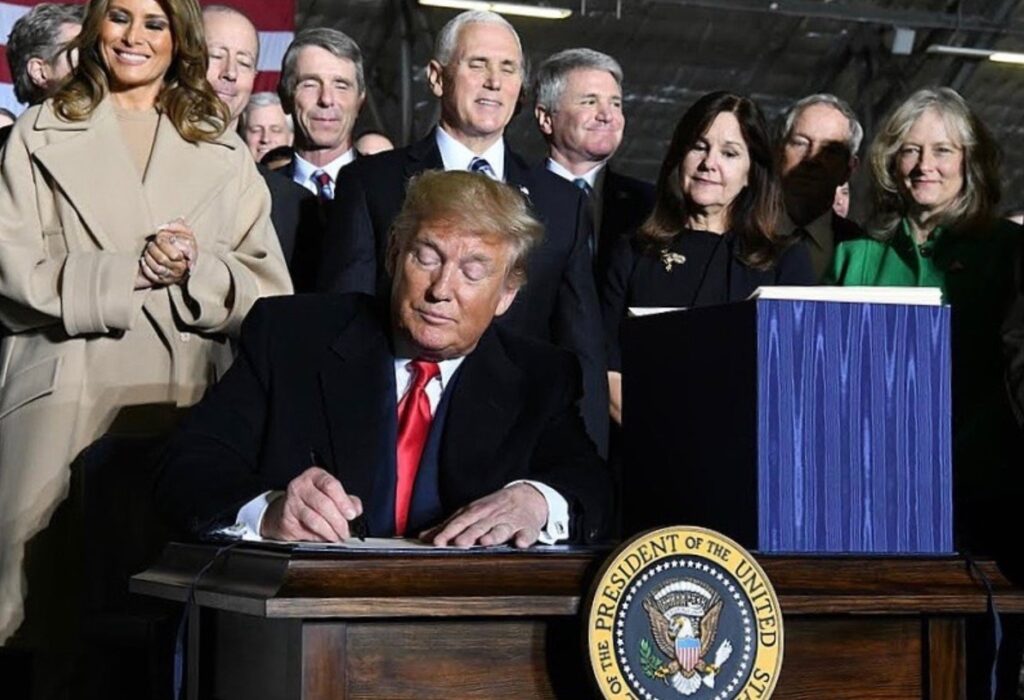Former President Donald Trump has announced that he would block any attempt by the Federal Reserve to launch a digital version of the U.S. dollar, calling it a “dangerous threat to freedom”. Trump made this statement at a rally in New Hampshire on Wednesday night, ahead of the state’s primary election next week.
A central bank digital currency (CBDC) is a digital form of money that is issued and backed by a central bank, such as the Federal Reserve. Unlike cryptocurrencies, which are decentralized and operate on a network of computers, a CBDC would be centralized and controlled by the issuing authority. A CBDC would also be legal tender, meaning that it would have the same status and value as the existing paper currency.

The main benefits of a CBDC are that it could improve the efficiency and security of the payment system, reduce transaction costs, enhance financial inclusion, and support innovation. A CBDC could also provide more transparency and accountability for monetary policy and financial stability.
Why is Trump opposed to a digital dollar?
Trump said that he would never allow the creation of a CBDC if he were elected president again, arguing that it would give the federal government “absolute control over your money”. He claimed that the government could “take your money” without your knowledge and use it to spy on you and manipulate your behavior.
Trump’s opposition to a CBDC echoes the concerns of some Republican lawmakers and governors, who have also criticized the idea as a potential tool for “government tyranny” and “woke ideology”. Florida Governor Ron DeSantis, one of Trump’s rivals in the primary, has even banned the use of CBDCs in his state.
What is the Fed’s stance on a digital dollar?
The Fed has not made a final decision on whether to create a digital dollar, but it has been conducting research and experiments on the feasibility and implications of such a move. The Fed has said that it would not proceed with a CBDC without the approval of Congress and the executive branch, and that it would consult with the public and stakeholders before taking any action.
The Fed has also emphasized that it would protect the privacy and security of consumers while complying with the laws and regulations that prevent money laundering, terrorism financing, and other illicit activities. The Fed has proposed that a CBDC would be held in digital wallets provided by banks or other regulated entities, rather than directly by the central bank.
The Fed is expected to release a comprehensive report on the pros and cons of a CBDC later this year, which will inform the public debate and policy discussion on this issue.
How does the U.S. compare to other countries on CBDCs?
The U.S. is not the only country that is exploring the possibility of issuing a CBDC. According to the Bank for International Settlements, more than 80% of central banks around the world are working on CBDCs in some form, and some have already launched or piloted them.
For example, China has been testing its digital yuan since 2020, and plans to use it for the 2022 Winter Olympics in Beijing. The Bahamas has introduced its digital sand dollar in 2020, becoming the first country to have a fully operational CBDC. The European Central Bank has announced its digital euro project in 2021, and aims to launch it by 2026.
The U.S. is lagging behind some of its peers and rivals in developing a CBDC, but it also faces different challenges and opportunities. The U.S. dollar is the world’s dominant reserve currency, and any change to its form and function could have significant implications for the global financial system and the U.S. economy.
